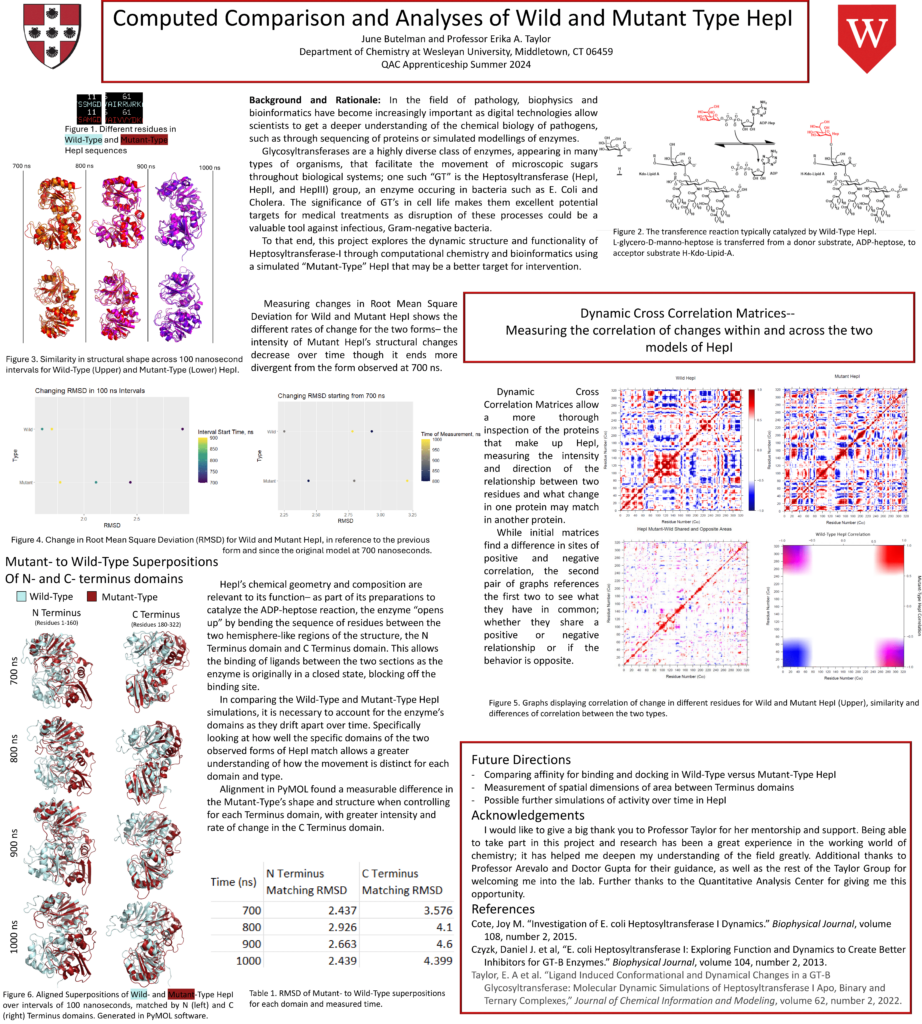Faculty Sponsor: Professor Erika Taylor
Abstract:
This project is part of the Taylor Laboratory’s ongoing bioinformatic exploration of Heptosyltransferases, a group of several enzymes found in Gram-negative bacteria—widely spread bacteria that are challenging to track due to their structure and include those that cause infectious diseases such as Cholera, Salmonella, and Chlamydia. Professor Taylor researches Heptosyltransferases I, II, and III because of the vulnerability that disrupting or altering these enzymes may open up in said bacteria and for a greater understanding of the chemistry of enzymology. This project examines and compares the structure and activity of natural, or “Wild-type”, HepI and a simulated mutant form with a different geometry and sequence of residues. Mutant-Type HepI is more open to bonds in certain ranges and moves differently to the Wild-Type. The data used in this project will appear further in Taylor group publications as we investigate the medical significance of Heptosyltransferase enzymes.



